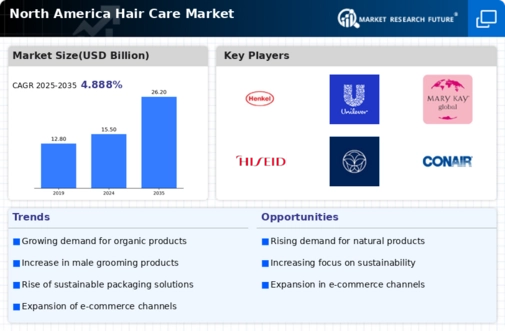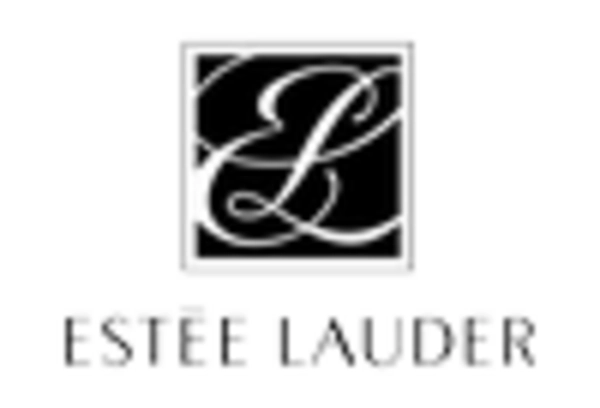Increasing Demand for Sustainable Products
The hair care market in North America is witnessing a notable shift towards sustainability. Consumers are increasingly prioritizing eco-friendly products, which has led to a surge in demand for brands that utilize sustainable practices. This trend is reflected in the market, where approximately 30% of consumers express a preference for products with environmentally friendly packaging and ingredients. Brands that align with these values are likely to capture a larger share of the market. Furthermore, the rise of awareness regarding environmental issues has prompted companies to innovate and reformulate their products, ensuring they meet the expectations of eco-conscious consumers. This focus on sustainability not only enhances brand loyalty but also positions companies favorably in a competitive landscape, potentially driving growth in the hair care market.
Rising Awareness of Hair Health and Wellness
There is a growing awareness of hair health and wellness within the hair care market in North America. Consumers are increasingly recognizing the importance of maintaining healthy hair, leading to a rise in demand for products that promote hair vitality and strength. This trend is reflected in the market, with a reported increase of 15% in sales of products specifically designed for hair health. Brands are responding by developing specialized treatments, such as scalp care products and supplements that support hair growth. This heightened focus on wellness is likely to drive innovation and diversification within the industry, as companies seek to meet the evolving needs of health-conscious consumers. As awareness continues to grow, the hair care market may experience sustained growth driven by this emphasis on holistic hair care.
Expansion of Retail Channels and Accessibility
The hair care market in North America is experiencing an expansion of retail channels, enhancing product accessibility for consumers. Traditional brick-and-mortar stores are increasingly complemented by online platforms, allowing consumers to purchase products conveniently. This shift is evidenced by a 20% increase in online sales within the hair care sector, as consumers seek the ease of shopping from home. Additionally, the emergence of subscription services and direct-to-consumer models is reshaping the retail landscape, providing consumers with tailored options and regular deliveries. This diversification of retail channels not only meets consumer demand for convenience but also allows brands to reach a broader audience. As accessibility improves, the hair care market is likely to see continued growth, driven by the evolving shopping preferences of consumers.
Influence of Social Media and Beauty Influencers
The hair care market in North America is increasingly shaped by the influence of social media and beauty influencers. Platforms such as Instagram and TikTok have become vital channels for brands to reach their target audience. Approximately 70% of consumers report being influenced by social media when making hair care purchases. Influencers play a crucial role in shaping consumer perceptions and preferences, often driving trends and product popularity. This dynamic has led brands to invest heavily in influencer partnerships and social media marketing strategies. As a result, companies that effectively harness the power of social media are likely to see enhanced brand visibility and sales growth. The ongoing evolution of digital marketing strategies will continue to impact the hair care market, making it essential for brands to adapt to these changes.
Technological Advancements in Product Development
Technological innovations are significantly influencing the hair care market in North America. The integration of advanced technologies, such as artificial intelligence and machine learning, is enabling brands to develop more effective and personalized hair care solutions. For instance, companies are utilizing data analytics to understand consumer preferences and tailor products accordingly. This has resulted in a projected growth rate of 5% annually in the sector, as brands that leverage technology can offer enhanced formulations and targeted treatments. Additionally, the emergence of smart hair care devices, which provide real-time feedback on hair health, is likely to attract tech-savvy consumers. As technology continues to evolve, it may redefine product offerings and consumer engagement strategies within the hair care market.

















Leave a Comment